What is a Change Management Plan?
Sometimes change is required for improved performances and results. Change usually occurs at an organizational level but it is always structured. The change management plan helps you to adapt to the change in a smooth manner. The plan has details regarding the reorganization of the things that require change.
Change can be of different varieties, it may be staff change or schedule change, or even a budget change. The main role of a change management plan is to provide a smooth transition with positive results.
It is an outline for the change in strategy of the project with the details of the procedures dealing with change. The change request is put forward after the acceptance of further plans is made.
The plan has in-depth details about the change of the variation in the plan. The type of change is described along with the reason. There are easy steps that you can follow which are mentioned further.
Also, you can use templates to save time. Mainly the change management plan has a definition of change, the context of change, reason of change, areas of change, team members significantly involved in the change process, resources, and budget in accordance with the change plan, the timeline for the change plan, and goals/ final outcomes.
Check out Project Charter Template in Excel as a Related Template.
Format of Change Management Plan Template
There are different methods to write a change management plan. But the basic format stays the same. We will take you to these easy steps to write your own change plan.
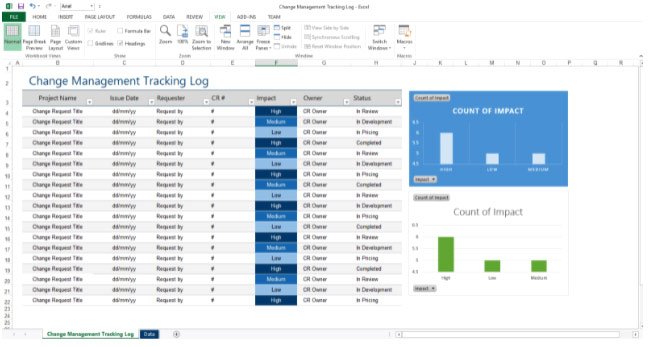
There are 5 phases when going for a change management process;
Phase 1: Change Assessments
It is the first and the most important step of a procurement management plan. You need to analyze the areas in which you require change. The better the assessment the better the results will be.
For an assessment make sure the team is ready to get into the process. Go through the impacts of change and involve stakeholders in the assessment process.
Phase 2: Develop Change Plans
Right after assessing the areas of change and data collected, you need to put in an executable plan. Alter the roadmap of the plan as per your changed plans.
Communicate with your team about the change plan, engage the stakeholder and seek his attention. Allocate resources, adjust the timeline and budget according to the change plan. Sometimes the change plan leads towards training and coaching of the onboarding team.
Phase 3: Execute Change Plans
Now is the time to implement the changes you have made in phase 2. Make sure that you have a solid plan and the training process is completed to execute the plan smoothly.
Through the change process communication is an important tool; the right communication will bring a difference in the overall happenings of the project. It is good to have a mentor to lead the change plan.
Phase 4: Track and Monitor Adoption
As soon as the plan progresses and changes are already occurring back and forth, now keeping up with the changes is a task. Track the activities occurring after the change plan.
See how well the team is adapting to that change. Different surveys are conducted to get employees’ points of view. Meetings are conducted to keep track. Celebrate the milestones of change to keep the team involved and motivated.
Phase 5: Change Management Exit
Now that change is made and confirmation is done that things are going well as per the plan. In phase 5, the team switch or shift is likely to happen. Keep that transition smooth and transparent. Hand over all the related documents to the responsible employee attandence. And, celebrate the success of the change plan.
Download Change Management Plan Templates
Template 1- Change Management Communication Plan:
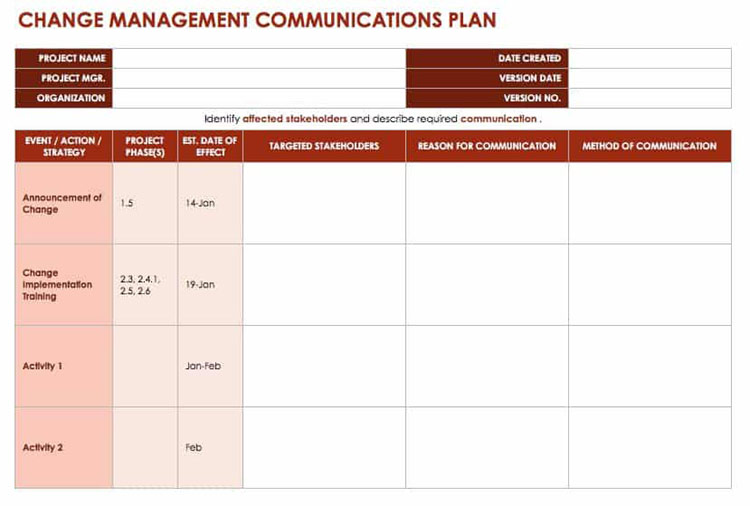
Template 2- Change Management Log Template:
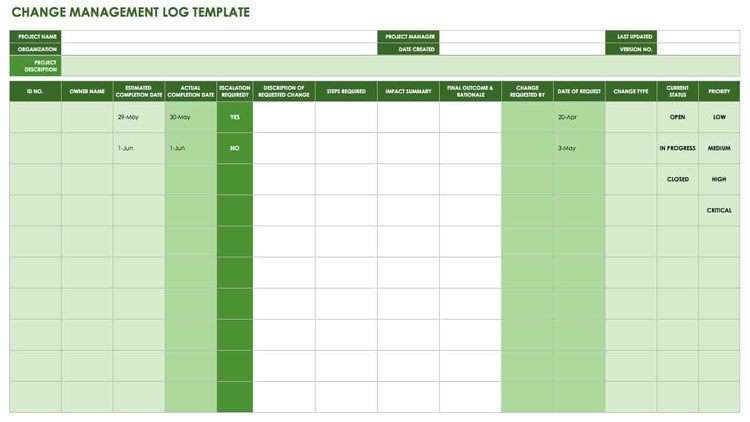
What is Included in a Change Management Plan?
The most followed change management plan is the ADKAR template which is explained in detail further;
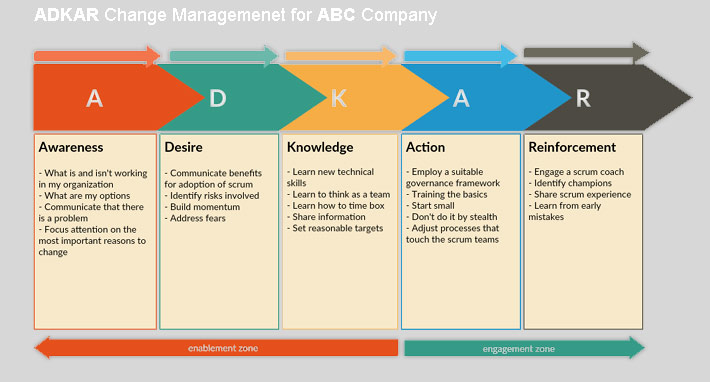
A stands for awareness of the need to change– it is important to know why you need certain changes. Go through the change assessment process and look for the areas of improvement.
D stands for Desire to change– every team desires a profitable plan and sometimes a change plan works well for the cause. Conduct training and coaching workshops.
K stands for knowledge of how to change– a good quality management communication plan is required to transfer the knowledge and information about the change plan and its impacts.
A Stands for the ability to demonstrate needed skills– make sure that your team is capable enough to perform the changed plan effectively. If training workshops are required, organize them shortly.
R stands for reinforcement of change– reinforcement is important to adapt to change. Keep your team motivated to learn new techniques.
Benefits of Change Management Plan
- It clearly defines a plan for the dependencies of the project
- Timeline according to the transition plan
- Better communication and coordination among the team
- Minimize the flaws hindering the progress
- Risk removal
- Better use of resources
Change Control Process
Sometimes the project is not getting along well with the decided plan and requires change. But the changes you are looking for are carefully analyzed and accepted by the team and stakeholders. Make sure the change process doesn’t let you go out of the budget and timeline limitations.
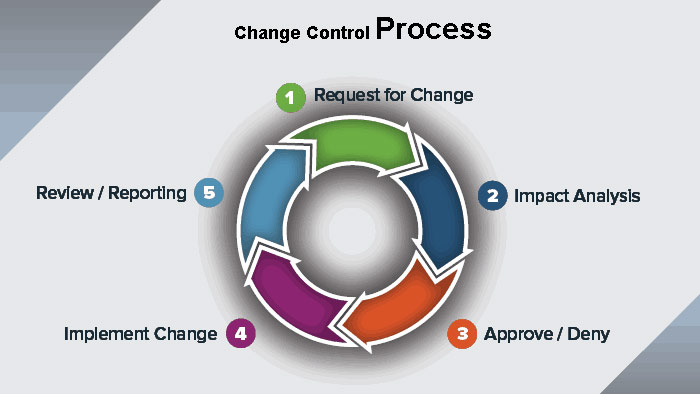
The change control process helps you to look over these matters and get a better plan or direction. The process helps you to make only selective changes while keeping other things constant. It doesn’t let you waste time and resources.
A well-executed change control process brings positive changes to a project. It helps the team in the loop for better performance and coordination which brings a productive change to the overall project.
It also improves the problem-solving capacity of the team. The managers also have better control over the plan. It keeps the team intact and motivated to person better as the project progresses. Different software has templates available for the change control process.
Change Management Plan Template in Excel typically includes essential components such as a comprehensive change description, rationale for the change, and its expected impact on the organization.
Additionally, it outlines a step-by-step action plan, specifying the roles and responsibilities of team members involved in the change implementation. The template also incorporates a communication strategy to keep all stakeholders informed throughout the process, fostering transparency and reducing resistance to change.





Hi team
Your template fulfill my need, can I have this Template?
Hi Tiana
Please check your inbox!
Hello – where can I download these helpful tools?
I would really love to use this for a new effort I’m driving. Can I have a copy of these wonderful templates?
Dear Team,
Very great and spot-on insights on change management procedures.
Can I kindly get this template please.
Your template fulfill my need, can I have this Template?
Hi Julie please check your inbox!
Can I kindly have the template? I already requested for it…
Hi Thomas Chiteri
Please check your inbox!
esosa.ikolo@gmail.com
I would appreciate a copy of this comms template too please
can you please send me the templates for change management
where to download templates?
where can I download these templates
May I please have these templates?
Hi Aison, Te tool is premium now and came up with new exciting features please use the link below to get access.
Link1: https://www.template124.com/pmp-templates/
Link2: https://template124.com/project-plan-portfolio/
This is spot on, would love to see the templates
Absolutely great template. May I request these templates please.
I need the templates
Hallo My Team
Your template fulfill my need, can I have this Template?
Thak you
Hi team
Your template fulfill my need, can I have this Template?